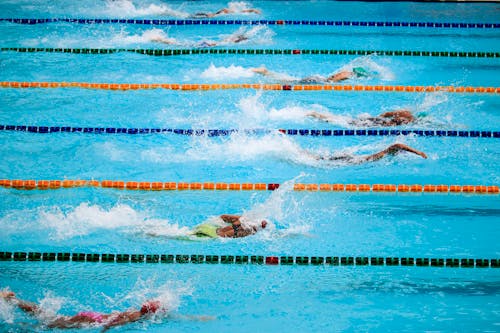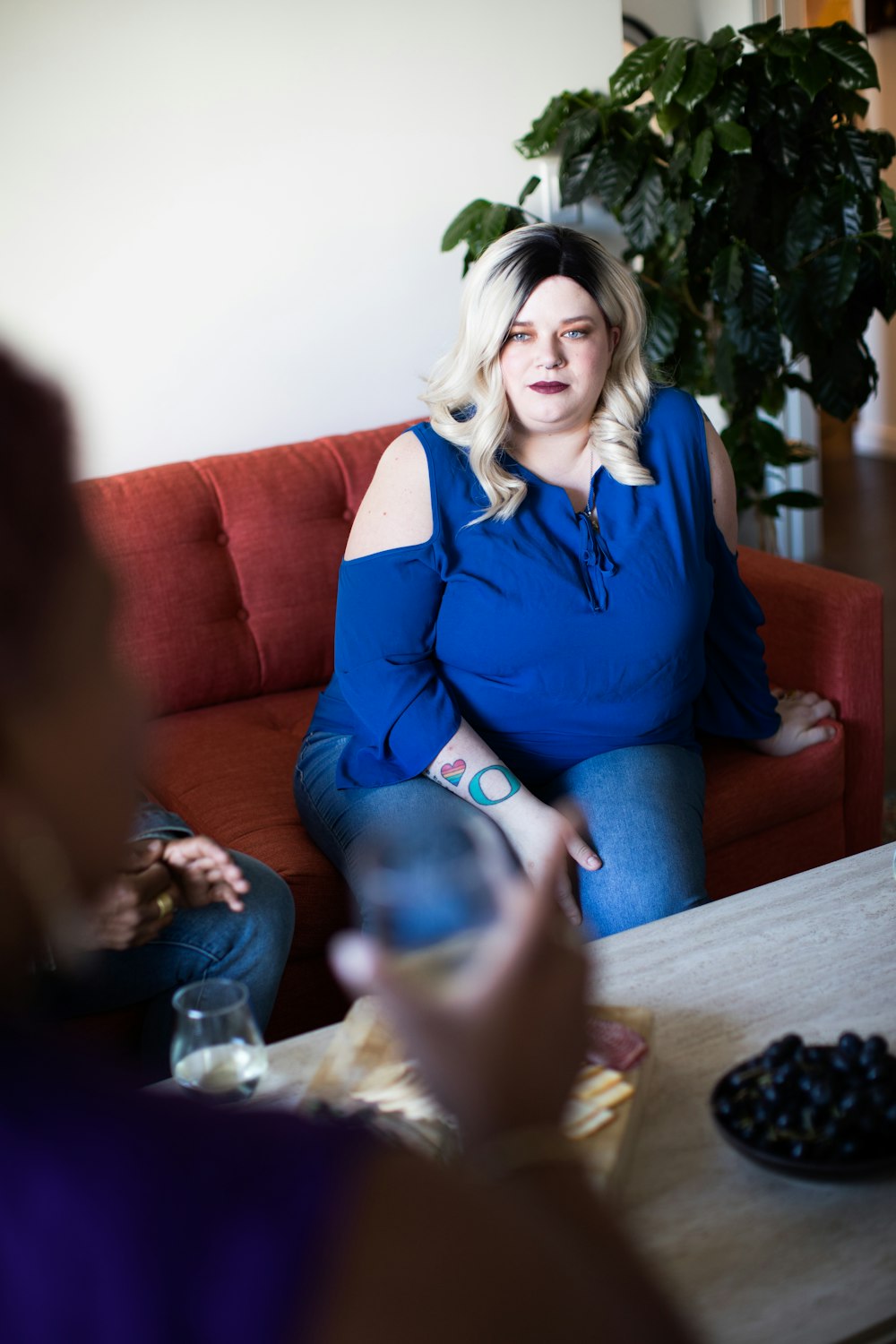Representation matters in all aspects of life. This week, when we speak about eating disorders, for Eating Disorder Awareness week, most of us are likely to immediately think of thin, female teenager grappling with their relationship with food. And while this definitely represents a cohort of the people struggling with the illness, it is not entirely representative of a) what an eating disorder looks like and b) who experiences them.
There is a reason that these images are in our heads. The eating disorder became a staple plot point in lots of teen dramas over the years – and were often improperly dealt with. I’m thinking of Blair Waldorf in ‘Gossip Girl’, who’s eating disorder is bulimia and is linked to her parent’s separation in the show. It is used as a plot device, thrown in when it is convenient to move the story forward, appearing in episodes very sporadically, not showing itself until it’s needed. Cassie Ainsworth on ‘Skins’, who was beautiful and ‘inspiring’ to lots of teens in the 2000s, both because of and in spite of her condition, anorexia nervosa. 'Glee'’s Marley, starving herself and purging due to bullying, pressure and lack of self esteem and then the storyline is promptly forgotten once she is confident enough to be the lead in the musical. Patti in 'Insatiable', who is one of the few playing a teen with a binge-eating/compulsive eating problem, becomes super skinny and magically ‘hot’ after going on a liquid diet for three months.

All of these representations and many others are problematic for lots of reasons: They romanticise extreme weight loss measures by portraying beautiful and desirable girls 'fixing their lives', they dramatize it as a cry for help, they often treat it as a physical illness rather the mental one that it is and they present limited images of what an eating disorder can look like.
It is true that young teenage girls are most affected by eating disorders and the above representations, as well as the media we consume around the female body can be linked with this. But eating disorders don’t just affect teenagers. Eating disorders can affect anyone because they are a mental illness.
Who is experiencing eating disorders and how they are experiencing an eating disorder is significantly skewed in the public mindset. Because of the kinds of eating disorders and the types of people experiencing them that we see commonly portrayed in the media, people outside of that age and disorder bracket sometimes do not realise that they are actually experiencing symptoms of an eating disorder.
Who is experiencing disordered eating
Beat Eating Disorders UK has seen cases of eating disorders in children as young as 6 years old and in women in their 70s. But the lack of awareness of eating disorders developing in anyone out of their teens or early twenties – even in those who aren’t female – is contributing to this problem. Gender and age are two significant factors that aren’t being factored into eating disorder representations.
Of the 1.25 million people in the UK that have an eating disorder, around 25% of those are male. The pressure surrounding the body in certain sports is a big factor in males experiencing eating disorders. Male athletes that are especially at risk are those competing in sports that tend to emphasise diet, appearance, size and weight. In weight-class sports (wrestling, rowing, horse-racing) and aesthetic sports (bodybuilding, gymnastics, swimming, diving) about 33% of male athletes are affected by disordered eating. One study found that 35% of female and 10% of male college athletes were at risk for anorexia nervosa and 58% of female and 38% of male college athletes were at risk for bulimia nervosa. Between 1999 and 2009, hospitalisations of men experiencing eating disorders increased by 53%.

In that same time period, patients hospitalised aged between 45-65 also increased, by a shocking 88%. By 2009, people over the age of 45 accounted for at least 25% of disordered eating hospitalisations.
Another major factor is race and ethnicity, especially in the Sates and with regards to treatment. Despite similar rates of eating disorders among non-Hispanic Whites, Hispanics, African-Americans, and Asians in the United States, people of colour were significantly less likely to receive help for their eating issues.

Representation of who is experiencing these disorders are important for both the public to be aware of people around them who may be experiencing these disorders (even if they don’t appear to ‘fit the criteria’) and also for treatment to be more inclusive and available. One study called for a gender-sensitive approach to recovery with recognition of different needs and dynamics for males is critical in effective treatment. Males in treatment can feel out of place when predominantly surrounded by females, and an all-male treatment environment has recommended—when possible.

How people are experiencing disordered eating
Anorexia accounts 8% of cases, but binge eating disorders account for 22% of eating disorder cases. But if asked, the first eating disorders that come to most people's minds are anorexia and bulimia - this is understandable, because they get a lot of coverage. But why? This is an issue that has been coming more to light over the past few years. The media focuses on bulimia and anorexia - which are both extremely important to highlight - but other disorders like binge eating do not get the same screen time.
Binge eating disorders are not as widely portrayed in the media, despite it also being a psychological disorder like anorexia or bulimia. Eating Disorders.org discusses how the media can fetishize food and yet encourage a body that has an unhealthy relationship with it.
‘[The media] confers hidden meanings on food – nostalgia, sexiness, being a good housewife and mother, rewarding oneself, having uninhibited fun etc, and creates unnatural drives for food. [They] can persuade us that wrong eating habits are right and natural…The media presents us with an idealised shape which is invested with attributes of being attractive, desirable, successful and loveable but which is unattainable without resorting to sinister or dangerous eating habits. [It] perpetuates the feeling in people who do not have the ideal shape that their life would be fine if they were slim.’
A binge eating disorder is serious mental illness where people eat very large quantities of food without feeling like they’re in control of what they’re doing. Researchers acknowledge that although BED is not a new disorder, it has only very recently been recognised formally in the research community as one of the disordered eating conditions. This lack of recognition has left the research community with far more gaps in the data on the incidence and prevalence of BED than for anorexia and bulimia.

A 2007 American study found that 3.5% of women and 2.0% of men had binge eating disorder during their life. This means that BED (binge eating disorder) is three times more common than anorexia and bulimia combined.
So why aren’t we seeing more representation of it in eating disorder awareness campaigns, in the media, in eating disorder portrayals?
40% of people affected by BED are male, and most begin to develop it in their late teens to early twenties, although cases have been reported outside of that age bracket. 28.4% of people with current BED are receiving treatment for their disorder and 43.6% of people with BED at some point in their lives will receive treatment.
But another issue is that these TV representations rarely show the long and difficult recovery from an eating disorder. They romanticise it and then the storyline magically disappears without the years of therapy and treatment that eating disorders usually take. Beat Eating Disorders UK suggests that 46% of anorexia patients fully recover, 33% improve and 20% remain chronically ill. Similar research into bulimia suggests that 45% make a full recovery, 27% improve considerably and 23% suffer chronically.

It is so important to look critically at why we as a society understand and are aware of certain disorders and not others. Our social and media habits – as well as the media itself – are feeding one narrative of disordered eating – the one that makes you thinner, the one about the obvious victim of the teenage girl. Why do TV shows turn what could be a narrative of healthy mental recovery into a body-focused vanity project?
Eating Disorder Awareness week is about many things; Understanding and combatting eating disorders, focusing on signs and symptoms and ways to support those suffering. But another thing we should all bear in mind this Eating Disorder Awareness week is that anyone can suffer from an eating disorder – a mental illness is not exclusive to one particular demographic. This is not a piece to bash anyone experiencing an eating disorder, but to raise awareness of the diverse group of people it can affect and the diverse range of ways they can manifest. It is important to be aware so we can care and provide support to anyone in our lives experiencing disordered eating.
If you have any further questions or concerns, see here for more information.









